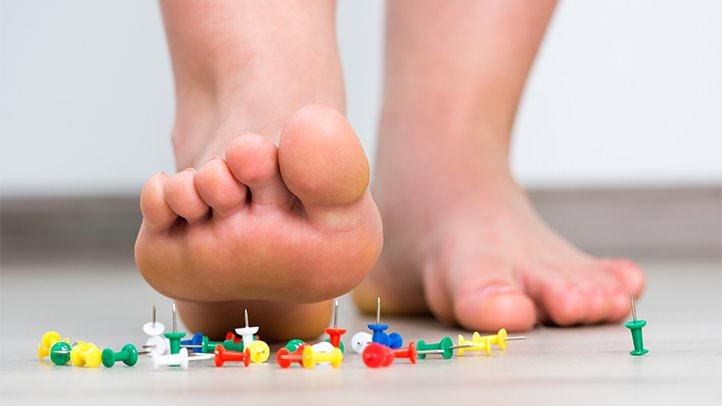The peripheral nervous system connects the nerves from the brain and spinal cord (central nervous system) to the rest of the body. This includes the hands, feet, arms, legs, mouth, face, and the internal organs. The nerves deliver signals about physical sensations back to the brain.
When the nerves are destroyed or damaged, they can malfunction. This disorder is called peripheral neuropathy. When the normal functioning of the nerve is disrupted, they can send pain signals even if nothing is causing pain or they can do the opposite and not send any pain signals even if something is already harming you.
Peripheral neuropathy can be very uncomfortable. Fortunately, there are several peripheral neuropathy treatment options available nowadays. Prior to recommending the best treatment option, determining if the condition is the result of a serious underlying condition is crucial.
Some of the possible treatment options for peripheral neuropathy include physiotherapy, over-the-counter (OTC) pain medications, ergonomic splints or casts, chiropractic care, etc.
How is the condition diagnosed?
To diagnose peripheral neuropathy, your doctor will look into your medical history and conduct a physical examination. If they are still unsure if the symptoms point to peripheral neuropathy, other tests may be ordered.
Some of the possible tests that might be requested include:
Blood tests - might be done to measure blood sugar levels and assess if the thyroid is functioning accordingly.
CT or MRI scan - may be done to check if there is anything pressing on the nerve like a tumour or herniated disk.
Nerve biopsy - this minor surgery will involve removing a small part of the nerve tissue so that it can be examined.
Electromyography - this test can indicate problems with how the body’s nerve signals are moved to the muscles. For this test, a small needle is placed into the muscle. Patient will then be asked to move the muscle gently. The probes in the needle will measure the amount of energy that moves through the muscle. The test can be likened to receiving a shot. In some cases, the area can become sore for a few days.
Nerve conduction study - for this test, electrodes will be placed on the patient’s skin. Tiny amounts of electricity will then be pulsed through the nerves to check if they are transmitting signals as they should. While the procedure can be slightly uncomfortable, patients will not experience any pain or soreness afterwards.
What are the different types of peripheral neuropathy?
There are more than 100 different types of peripheral neuropathy. Understandably, each type can manifest different and unique symptoms and will require diverse treatment options.
Peripheral neuropathies are also classified based on the kind of nerve damage involved. For instance, when only one nerve is damaged, the condition is called mononeuropathy. When multiple nerves are damaged, it is called polyneuropathies.
There are 3 types of peripheral nerves:
● Sensory nerves (connects to the skin)
● Motor nerves (connects to the muscles)
● Autonomic nerves (connects to the internal organs)
Peripheral neuropathy can either affect just one nerve group or all three.
What are the common symptoms of the condition?
Some of the most prevalent manifestations that point to peripheral neuropathy include:
● Tingling in the feet or hands
● Feeling like you’re wearing a tight sock or glove
● Stabbing and sharp pains
● Numbness in the feet or hands
● Weak or heavy feeling in the arms and legs (sometimes you’ll feel like your arms or legs are locked in place)
● Buzzing sensation
● Drop in blood pressure
● Thinning of the skin
● Sexual dysfunction (especially in men)
● Digestive difficulty
● Constipation
● Excessive sweating
● Diarrhea
● Dropping things from your hands regularly






